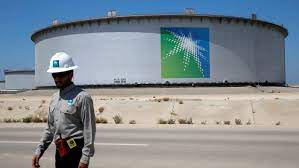Amid expanding and robust oil demand in China, Saudi Aramco’s chief executive, Amin Nasser, announced on Sunday that the oil giant was exploring other investment prospects in that country.
With several petrochemical and refining arrangements, some of which include crude offtake agreements, state-owned Aramco has been expanding its footprint in China.
During a media call after the announcement of results that showed net profit slid 24.7% to $121.3 billion due to lower oil prices, Nasser stated, “So far we are in the early part of 2024, demand is healthy and growing in China.”
Laptops 1000Based on Nasser’s statement, Aramco was currently exploring more investment options, as the nation’s refineries possessed some of the greatest conversion rates and were highly integrated. Nasser predicted that by 2024, the world oil market would still be strong.
“We expect it to be fairly robust, we are looking at growth of about 1.5 million barrels,” Nasser claimed. The demand for 2024 was estimated by Nasser to be 104 million barrels per day, compared to an average of 102.4 million barrels in 2023.
Late in January, the Saudi government gave Aramco the order to abandon its plan to increase production capacity to 13 million barrels per day (mbpd) and go back to the original 12 mbpd goal.
Three of the expansion plan’s projects are still in progress, while Safaniyah and Manifa have been shelved. Zuluf, Marjan, and Berri are anticipated to contribute 600,000, 300,000, and 250,000 barrels of crude production per day, respectively.
Despite the ongoing developments, Nasser stated that maximum production capacity would be optimized to keep it within the 12 million bpd objective.
“I’ll handle that by reducing our loss and counteracting it with the addition that Zuluf, Marjan, and Berri will bring. That shouldn’t affect how many rigs we have out in the field.”
Laptops 1000Higher overseas and offshore oil exploration and production, mostly in the Middle East and Africa, had largely helped oilfield firms ride out slowing drilling activity by U.S. shale producers. This decision on the capacity target sent shares of U.S. oilfield services providers plunging.
LITHIUM, LNG, AND GAS
By 2030, Aramco wants to increase its gas production from 2021 levels by 60%. After deciding to acquire a strategic minority position in MidOcean last year, Nasser stated that Aramco may collaborate with the American investment firm EIG Partners to fund LNG projects outside of Australia.
“We are partnering with MidOcean in Australia and we might partner with them in other enclaves depending on the opportunities,” he stated.
Aramco was interested in investing in LNG potential in the United States, according to Nasser, but he could not provide any further information. “We are in discussion with several companies.”
The world’s top exporter of LNG is the United States, and the business is booming globally. Aramco is in talks to invest in phase 2 of Sempra Infrastructure’s Port Arthur LNG project in Texas, a potential expansion to the first phase that is now producing.
As for a partnership with China’s Geely and French automaker Renault for a 15% to 20% share in their joint venture for combustion and hybrid engines, talks are still underway, according to Nasser.
Additionally, Nasser stated that Aramco was now assessing the lithium content of its oilfield brine.
Aramco is reportedly in the early phases of working on lithium extraction, a mineral essential to battery production in many major economies.
“This is a work in progress,” stated Nasser.

















